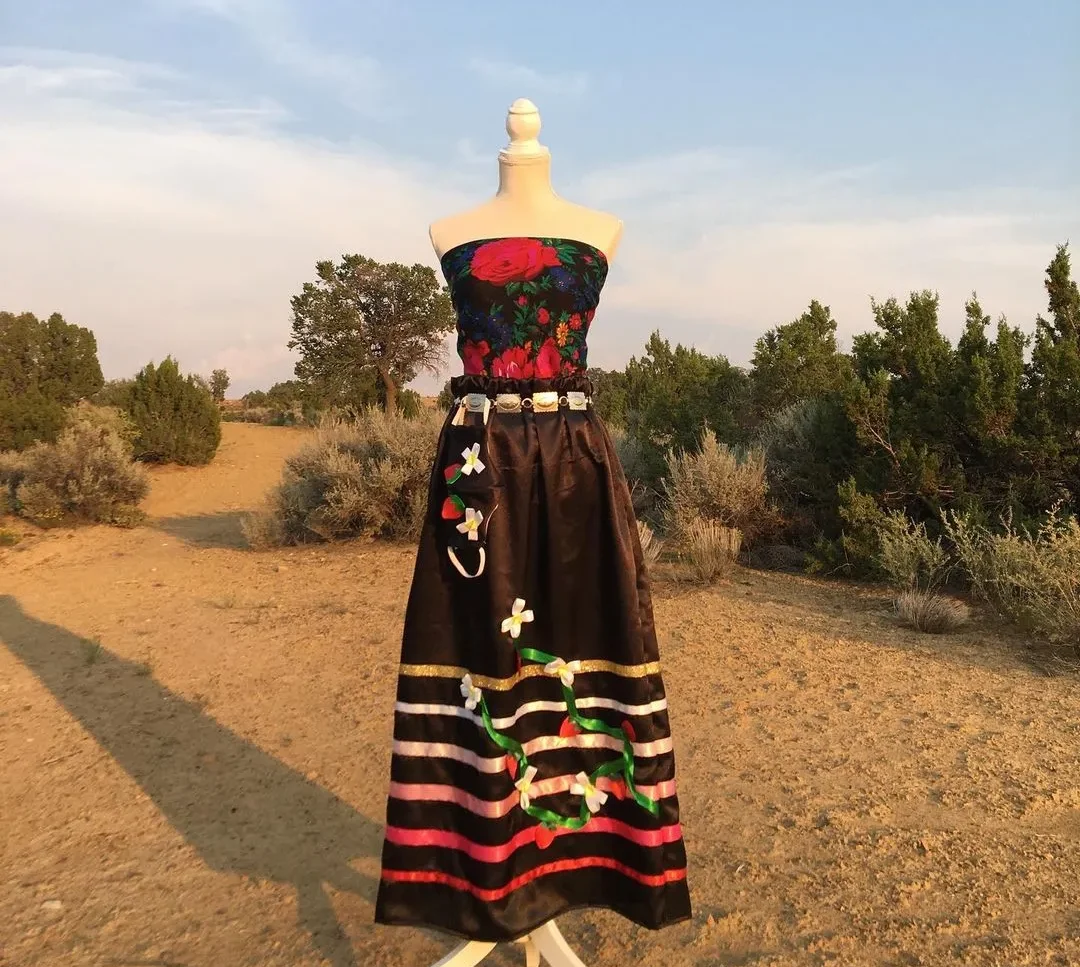Step into the enchanting world of Native American ribbon skirt patterns, and you’ll embark on a journey that weaves together the threads of tradition, culture, and artistic expression. These mesmerizing patterns are more than just designs; they are a testament to the rich heritage and creative spirit of Indigenous peoples. Impressive Design Of Native American Ribbon Skirt Pattern
In this exploration, Native American Clothes will delve into the impressive design of Native American ribbon skirt patterns, where every stitch tells a story and every color holds meaning.
What is the meaning of the ribbon skirt pattern?
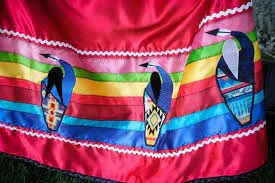
In a world that often emphasizes differences, there is an inherent need to celebrate our shared traditions and bonds. Now, more than ever, recognizing our commonalities can serve as a bridge to understanding, dialogue, and mutual respect. It is in this spirit of unity that the Ribbon Skirt, a symbol deeply rooted in Indigenous culture, emerges as a source of inspiration and connection.
A Ribbon Skirt is far more than just a piece of clothing; it is a canvas of culture and heritage, a vessel for stories, and a testament to the resilience of Indigenous peoples. In the following exploration, we delve into the multifaceted meanings and significance of the Ribbon Skirt, a garment that embodies the strength, identity, and sacredness of Indigenous women.
A Spectrum of Significance
The Ribbon Skirt, like the diverse Indigenous cultures it represents, defies singular definition. It can be as unassuming as everyday attire or as sacred as regalia reserved solely for ceremonies. Its meaning, like the ribbons adorning it, weaves a tapestry of narratives:
- Expression of Womanhood and Strength: The Ribbon Skirt serves as a canvas upon which women paint their identity and strength. It is an emblem of femininity, a symbol of empowerment, and a reflection of the enduring spirit of Indigenous women.
- Remembrance and Advocacy: In some instances, the Ribbon Skirt becomes a poignant reminder of the Missing and Murdered Indigenous Women and Girls (MMIWG). Wearing it becomes an act of advocacy, demanding justice and visibility for those whose voices have been silenced.
- Environmental Stewardship: Beyond personal expression, the Ribbon Skirt can transform into a shield against the encroachment of corporate interests on Indigenous lands. It symbolizes the protection of natural resources and the fight against environmental degradation.
- Journey of Reclamation: For many, donning a Ribbon Skirt signifies a reclamation of Indigenous identity and traditions. It tells the story of individuals who are reconnecting with their cultural roots and embracing the practices of their ancestors.
A Shield Against Assimilation
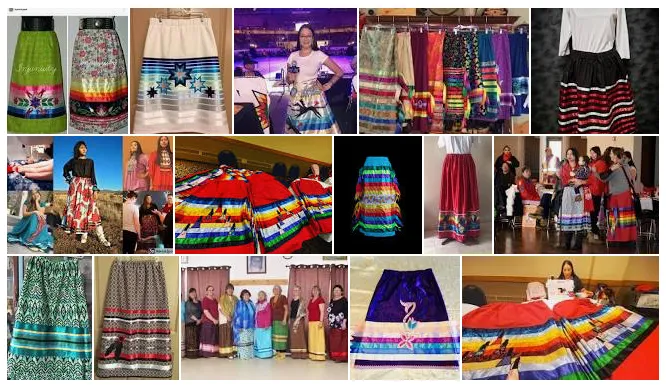
The Ribbon Skirt, when worn, becomes more than a garment; it becomes a shield against assimilation and cultural erosion. It stands as a powerful reminder of Indigenous women’s roles in their communities and their inherent sacredness. It encapsulates a narrative of adaptation and survival, echoing the strength of Indigenous peoples.
Through the act of wearing a Ribbon Skirt, individuals reaffirm their identity and their ties to their communities. It becomes a tangible representation of heritage—a collective heritage shared across Indigenous nations. While traditions and protocols surrounding the Ribbon Skirt may vary, the underlying history and reverence remain common threads that unite Indigenous cultures.
The Rich Tapestry of Colors and Symbols
Within the world of Ribbon Skirts, every color, material, ribbon, and its length holds distinct meanings. This significance is unique to each Indigenous nation and community, a testament to the rich diversity of Indigenous cultures.
To explore these intricacies fully, it is encouraged to engage with Knowledge Keepers and Elders within one’s own community. They hold the keys to unlocking the depth of tradition and protocol specific to their heritage.
In a world that thrives on diversity, the Ribbon Skirt stands as both a unifying symbol and a canvas for individual and collective expression. It invites us to celebrate our shared history while honoring the unique stories and traditions that make each Indigenous nation distinct.
In this celebration of unity and diversity, the Ribbon Skirt emerges as a vibrant thread in the tapestry of Indigenous culture—a tapestry that continues to evolve and enrich our understanding of the world’s oldest traditions.
How many yards of fabric do I need for a ribbon skirt?
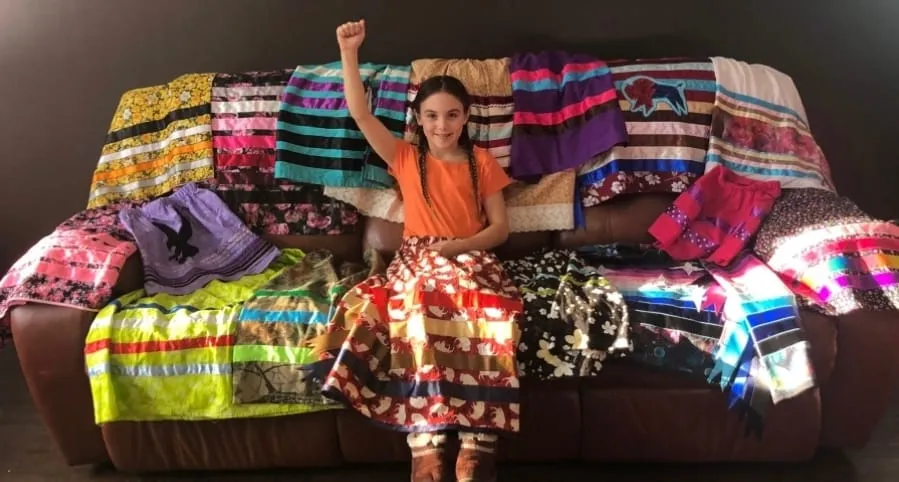
Are you ready to embark on a creative journey and fashion your very own Ribbon Skirt? Whether you’re a seasoned seamstress or a novice with a passion for crafting, making a Ribbon Skirt can be a fulfilling and culturally significant project. In this step-by-step guide, we’ll walk you through the process of creating a Ribbon Skirt that resonates with your style and heritage.
Gather Your Supplies
Before you dive into the crafting process, it’s essential to assemble all the necessary supplies. Here’s what you’ll need:
- Fabric: Approximately 2 yards of medium to heavy-weight fabric is ideal for your Ribbon Skirt. Materials like calico or bridal satin work exceptionally well.
- Ribbons: You’ll require satin ribbons measuring 1.5 inches in width. These ribbons will add vibrant accents to your skirt.
- Thread: Ensure you have thread that matches the color of each ribbon you plan to use. Coordinating thread is essential for a polished finish.
- Elastic: A 1-inch knit elastic band will provide comfort and flexibility at the waistband of your skirt.
- Tape Measure: Precise measurements are crucial, so have a tape measure on hand to ensure your Ribbon Skirt fits perfectly.
- Optional: Quilting Ruler: While not mandatory, a quilting ruler can assist in laying down the ribbons evenly and symmetrically.
- Fabric Scissors/Snips: Quality fabric scissors or snips are essential for clean and precise cuts.
- 505 Spray: This temporary adhesive spray can help secure your ribbons in place during the sewing process.
- Sewing Machine and Needles: A sewing machine equipped with the appropriate needles is your primary tool for crafting the skirt. If available, a serger can provide additional finishing touches.
- Pocket Shape: If you plan to add pockets to your Ribbon Skirt, have a template or shape in mind to cut out.
- Safety Pin: A safety pin can be handy for threading the elastic through the waistband.
Step
Step 1: Measure and Cut Your Fabric
Begin by measuring and cutting your fabric to the desired length for your Ribbon Skirt. Consider the length you prefer, whether it’s ankle-length, knee-length, or somewhere in between. Be sure to account for seam allowances when determining your fabric’s length.
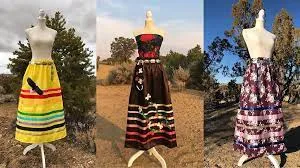
Step 2: Prepare Your Ribbons
Lay out your fabric and use your quilting ruler (if available) to help guide the placement of your ribbons. Here’s where your creativity can shine. You can arrange the ribbons in symmetrical patterns, create unique designs, or opt for a more random arrangement—whatever reflects your personal style and cultural heritage.
Step 3: Secure the Ribbons
To keep the ribbons in place while you sew, consider using 505 spray or another temporary adhesive. This will ensure that your ribbons stay aligned during the sewing process, resulting in a polished look.
Step 4: Sew the Ribbons
With your ribbons securely in place, use your sewing machine to stitch along the edges of each ribbon. Be sure to use thread that matches the color of the ribbon for a seamless finish. Take your time to ensure straight and even stitches.
Step 5: Create the Waistband
Fold over the waist of your skirt to create a casing for the elastic band. Sew along the folded edge, leaving a small opening to thread the elastic through. Attach a safety pin to one end of the elastic, thread it through the casing, and secure the ends together before closing the opening.
Step 6: Add Pockets (Optional)
If you’ve chosen to include pockets in your Ribbon Skirt, now is the time to attach them. Use your pocket shape template to cut out the pockets from your fabric, sew them, and then affix them to your skirt.
Step 7: Finishing Touches
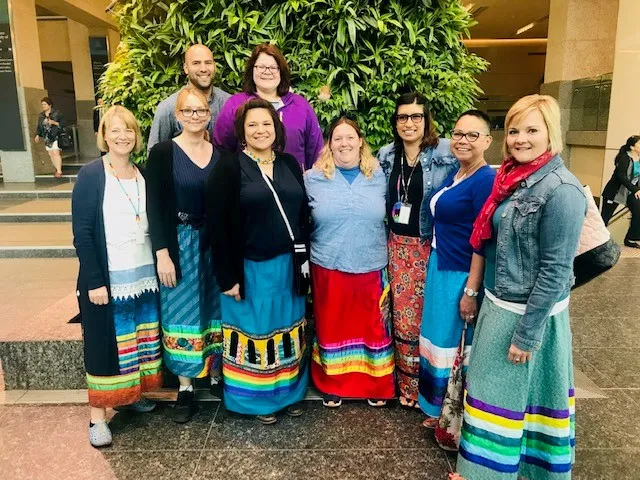
Inspect your Ribbon Skirt for any loose threads or uneven seams. Make any necessary adjustments to ensure your creation is flawless.
Step 8: Showcase Your Handiwork
Once your Ribbon Skirt is complete, it’s time to showcase your handiwork proudly. Wear it with pride, and let it be a reflection of your creativity, style, and connection to Indigenous culture.
Crafting a Ribbon Skirt is not just a creative endeavor—it’s a celebration of tradition, identity, and individuality. With each stitch and ribbon, you’re weaving a piece of your heritage into a garment that tells a unique story. Embrace the process, and let your Ribbon Skirt be a vibrant expression of your culture and creativity.
Impressive Design Of Native American Ribbon Skirt Pattern
Weaving Stories of Identity and Community
Step into the lively workshop at the Odawa Native Friendship Centre in Ottawa, and you’ll find a vibrant tapestry of colors, laughter, and creativity. Here, amidst the whirring sounds of sewing machines, people from various backgrounds gather to immerse themselves in the art of crafting ribbon skirts. This workshop is not just about sewing; it’s a celebration of tradition, identity, and community.
The Joy of Creation
Colleen Paxton, a dedicated volunteer at the friendship centre, guides participants in creating their own ribbon skirts. For many, it’s their first experience with a sewing machine, and the atmosphere is one of shared joy and learning.
“Through their skirts, people can express their individuality and feel a deep sense of belonging within the community,” Paxton remarks, highlighting the significance of these workshops.
A Canvas of Diversity
Ribbon skirts are as diverse as the people who create them. They vary in length, color, and design, reflecting the unique personalities and stories of those who wear them. Some skirts gracefully touch the ground, while others feature stylish slits along the sides.
Paxton emphasizes that the beauty of a ribbon skirt lies in its individuality. “Your ribbon skirt is an extension of your personality. If you wish to adorn it with two ribbons, go ahead. If you prefer six, that’s entirely up to you,” she encourages.
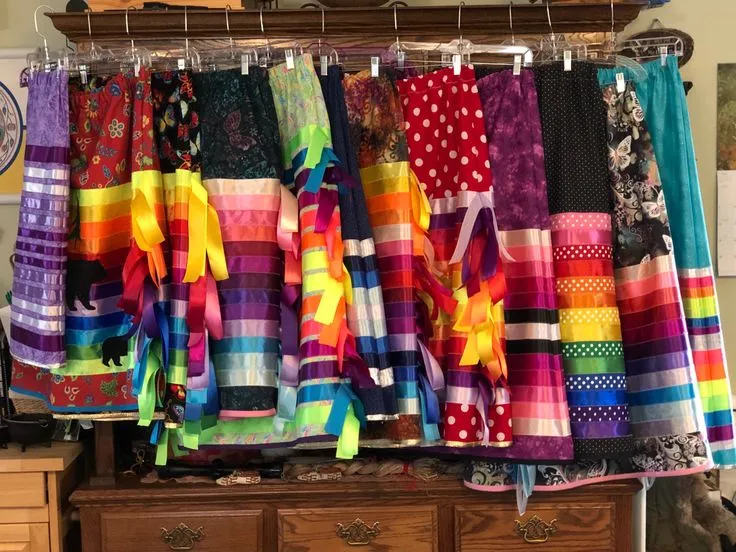
However, Paxton also notes the importance of seeking guidance from experienced individuals when crafting these skirts. The grandmothers who facilitate these ceremonies offer invaluable insights into the appropriate styles and designs for various occasions.
“Respectfully listen to their wisdom, then create your skirt in a way that feels right for you. Know that you will wear it with pride during the ceremony,” Paxton advises.
Honoring Tradition and Connection
Ribbon skirts hold a special place in Indigenous ceremonies and traditions. They symbolize respect for women and the teachings they carry. The length of these skirts serves to connect wearers with Mother Earth, ensuring that she recognizes those who touch her.
Barbara O’Neil, a participant in the workshop, shares her perspective. For her, the friendship centre is a place of healing and therapy. It provides a dedicated space to create not only skirts but also moccasins and regalia for meaningful ceremonies.
“We require these skirts for our ceremonies, especially for the drumming. When women make contact with Mother Earth, the long skirt becomes a symbol of that connection,” O’Neil explains.
Moreover, she emphasizes the importance of passing down these traditions to the younger generation. “I have eight grandchildren, and it’s my duty to learn and teach them these valuable skills,” O’Neil says with pride.
Connecting Communities through Culture
Jaime Morse, who moved to Ottawa from Alberta a few years ago, found solace and connection at the friendship centre. She values the sense of community and the opportunity to learn from people of diverse backgrounds.
“Centres like this have helped me reconnect with my roots and share my knowledge as a Métis person from the west with the Ottawa community,” Morse affirms.
In these workshops, the act of crafting ribbon skirts becomes a powerful means of preserving tradition, fostering unity, and creating a sense of belonging. Each skirt is more than a piece of clothing; it’s a testament to the enduring spirit of Indigenous cultures and the resilience of communities that continue to thrive and share their heritage.
See more: Traditional Culture In Native American Ribbon Skirt Designs

